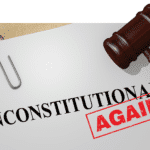The Business of Parking | Legal
The Business of Parking | Legal
Diversity, Equity, and Inclusion Policies Promote Best Practices in the Workplace

stock.adobe.com / Irina Strelnikova
The Opposite Invites Litigation
All workplaces should strive for meaningful ways to promote diversity, equity, and inclusion (DEI). There are a myriad of benefits for an equitable and inclusive work environment, and there are many human resources professionals that can provide insight on the effects of these benefits. As an attorney, what I can provide insight on is what results from the failure of an equitable and inclusive workplace: lawsuits. Complaints of discrimination have become commonplace, and employers need to understand the statutory framework that provides a cause of action for discrimination with a clear goal to avoid liability.
How is Discrimination Enforced?
While most states have their own version of protective workplace laws, there is a uniform federal statute that applies across the United States. The Equal Employment Opportunity Commission (“EEOC”) is a federal agency that administers and enforces civil rights laws against workplace discrimination. EEOC Guidelines specifically provide that harassment constitutes “verbal or physical conduct that denigrates or shows hostility or aversion toward an individual because of [the employee’s protected class,]” “has the purpose or effect of creating an intimidating, hostile, or offensive work environment,” “has the purpose or effect of unreasonably interfering with an individual’s work performance,” includes “[e]pithets, slurs, negative stereotyping, or threatening, intimidating or hostile acts, that relate to …disability” and “[w]ritten or graphic material that denigrates or shows hostility or aversion toward an individual or group because of [the employee’s protected class] and that is placed on walls, bulletin boards, or elsewhere in the employer’s premises or circulated in the workplace.” 29 C.F.R. § 1609.1(b).
There are many cases that have interpreted individual state’s laws against discrimination, clarifying the general criteria in proving whether harassment can be established to find an employer liable. Courts have specifically held that a plaintiff in a harassment action must demonstrate that the “complained of conduct (1) would not have occurred but for the employee’s protected status; and it was (2) severe or pervasive enough to make a (3) reasonable employee believe that (4) the conditions of employment are altered, and the working environment is hostile or abusive.” An employer may be strictly liable for equitable damages (back-pay, promotions, reinstatement, etc.) for discrimination and harassment committed by a supervisor. Agency principals apply to determine whether an employer may be responsible for compensatory damages (e.g., damages for emotional distress).
Liability for Discrimination
For a plaintiff to succeed in proving discrimination or a hostile work environment, he or she must present a full and complete depiction of the work environment which, when viewed as a whole, presents an image that is intimidating and hostile. As a result, both state and Federal Courts recognize that testimony by employees about discriminatory actions by the defendant-employer like those alleged by the plaintiff are admissible to prove the employer’s motive or intent to discriminate. An employer is subject to vicarious liability to a victimized employee for an actionable hostile environment created by a supervisor with immediate (or successively higher) authority over the employee. In such circumstances, the employer is strictly liable for tangible job consequences resulting from the supervisor’s actions.
Suggestions for Employers
An employer must maintain a comprehensive written anti-harassment and discrimination policy that informs its employees that unlawful harassment and discrimination will not be tolerated. The written anti-harassment or discrimination policy must also inform employees how and to whom they should bring their complaints so that the employee knows what he or she should do before the harassment or discrimination occurs. In its Model EEO Program, the EEOC set forth the following minimum guidelines of what must be included in an anti-harassment policy:
- A clear explanation of what constitutes as prohibited conduct.
- A statement of assurance that employees who complain of harassment or provide information relating to complaints of harassment will not be retaliated against because of making the complaint or providing such information.
- A clear description of the complaint process which provides access avenues to make a complaint of harassment.
- A statement of assurance that the employer will keep complaints of harassment confidential, to the extent possible.
- A complaint process that states that the employer will investigate complaints of harassment promptly, thoroughly, and impartially.
- A statement of assurance that the employer will take immediate and appropriate corrective action when it is determined that harassment has occurred.
Employers should also provide periodic training to its supervisors and managers concerning their responsibilities regarding the employer’s anti-harassment and anti-discrimination policy. The training should, at minimum, provide the supervisors and managers the types of conduct that will violate the anti-harassment and discrimination policy, the seriousness of the employer’s policy against harassment and discrimination, the duties, and responsibilities of the supervisors if they learn of allegations of harassment and discrimination and a clear prohibition against retaliation for making complaints or participating in a harassment or discrimination investigation.
Michael J. Ash, Esq., CRE, is a partner with Carlin, Ward, Ash, & Heart, attorneys at law.
-
Michael J. Ash, Esq., CREhttps://parking-mobility-magazine.org/author/michael-j-ash-esq-cre/November 9, 2021
-
Michael J. Ash, Esq., CREhttps://parking-mobility-magazine.org/author/michael-j-ash-esq-cre/February 3, 2022
-
Michael J. Ash, Esq., CREhttps://parking-mobility-magazine.org/author/michael-j-ash-esq-cre/May 2, 2022

EV Charging Accessibility
A Comprehensive Guide in Ensuring ADA Compliance in Electric Vehicle

A Closed Mouth Does Not Get Fed
Speaking Up on Allyship

From Parking Lot to Destination
How EV Charging Elevates the Role of Parking Facilities








